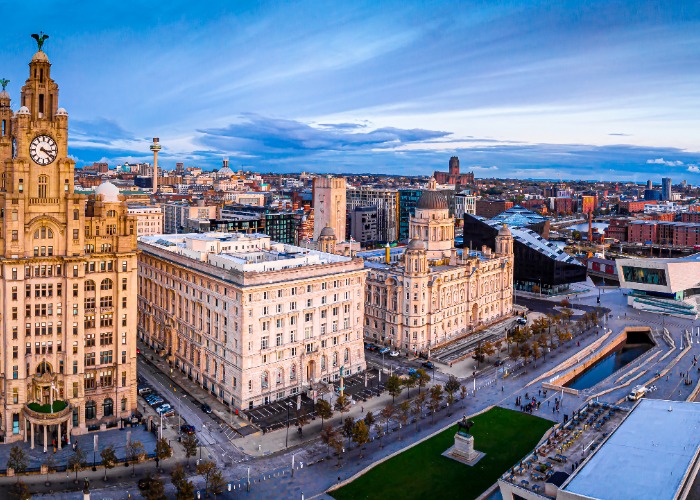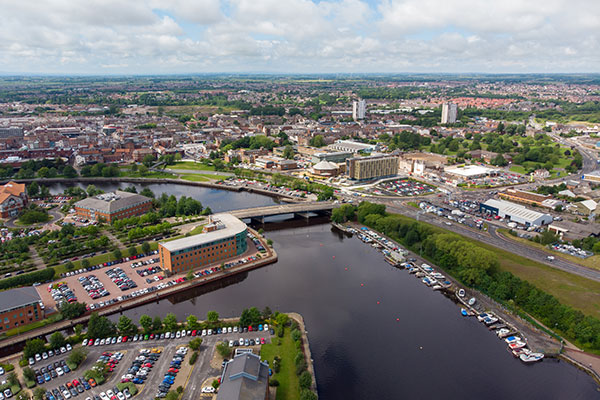Property predictions 2024: areas for buyers and investors to target

Looking to buy your first home or simply want to know which areas have the most potential? We asked those in the know to pick their property hotspots for 2024.
House prices are expected to continue falling over the coming year before starting to rise again due to lower interest rates and improved buyer demand.
Property analysts have warned average prices in Great Britain will have dropped nearly 10% from the start of 2023 to the end of 2024.
But the market is then expected to enjoy a relatively strong recovery that could add thousands of pounds to the values of UK homes over the next five years.
However, which areas are likely to enjoy the biggest price hikes?
Here, we reveal the towns and cities that prospective buyers should consider.
The current market
It’s certainly been a challenging 12 months for the UK’s property market, with soaring interest rates dampening buyer enthusiasm.
According to Robert Gardner, Nationwide’s chief economist, the total number of transactions involving a mortgage were around 25% below pre-pandemic levels.
“This subdued picture was also reflected in house prices, which in November were 2% lower than the same period in 2022, and 4.3% below the all-time high recorded in late summer 2022,” he said.
A key problem is affordability.
“A borrower earning the average UK income and buying a typical first-time buyer property with a 20% deposit would have a monthly mortgage payment equivalent to 38% of take-home pay – well above the long-run average of 30%,” added Gardner.
The market is now pricing in some “pretty hefty interest rate cuts”, taking us back to 4.5% by the end of 2024, according to Laith Khalaf, head of investment analysis at AJ Bell.
“It really didn’t take very long for markets to move from calling the peak in interest rates to getting excited about rate cuts,” he said.
“While lower rates would be good news for homeowners and businesses, hopes must be tempered by the foggy and contested nature of macroeconomic forecasts.”
What will happen in 2024?
Sarah Coles, head of personal finance at Hargreaves Lansdown, believes another tough year is in store for the property market.
“We can expect some positivity in the early spring, as the lower mortgage rates we’ve seen recently start to filter into the figures, but it’s highly unlikely to be a turning point,” she warned.
Inflation, higher interest rates and weakness in the economy more broadly, she argued, would all combine to keep a lid on house prices.
“The Office for Budget Responsibility expects property sales to fall another 6.9% in the coming year and prices to drop 4.7%,” she added.
Is it all doom and gloom?
While the coming year is expected to be pretty lacklustre, the longer-term prospects are more encouraging, according to a five-year house price forecast from Savills, the property adviser.
It believes mainstream house prices will bottom out in 2024, falling by a relatively modest 3% as borrowing cost pressures begin to ease in the second half of the year.
Property values could then rise 17.9% between 2024 and 2028, which is equivalent to a £45,521 gain on the average home.
Wales and the North East of England should see the highest rises of 21.4%, followed by the 20.2% uplift expected for the North West, West Midlands, Yorkshire and The Humber, and Scotland.
Lucian Cook, head of residential research at Savills, believes a gradual reduction in interest rates will lead to a steady recovery in demand.
“We expect growth to accelerate as affordability pressures ease, with the strongest growth forecast for 2027 when rates reach their long-term neutral level,” he said.
Five places to consider
Of course, no one can predict future house price movements with any certainty. Interest rates, inflation and the number of properties on the market will play their part.
Then there are more localised factors.
For example, the historic reputation of certain postcodes, the ease of transport links, and the types of houses available can affect valuations.
The quality of schools and job opportunities may also have an impact, according to Kim Kinnaird, director, Halifax Mortgages.
“What’s clear is that the UK housing market is not a single entity that performs in a uniform way across the country, there are differences,” she said.
So, where should prospective buyers start looking?
We combined research from Savills and property website Zoopla to come up with towns and cities worth considering.
Some have endured suppressed valuations for many years, while others are set to benefit from major infrastructure developments.
Sunderland – North East
Sunderland is a city within the county of Tyne and Wear in the North East of England.
It has a population of around 274,000 people, according to the 2021 census.
Website Zoopla highlighted its “excellent schools” and “strong sense of community”, as well as convenient links to Newcastle.
“Sunderland is a great place to live for a well-rounded lifestyle, offering a vibrant blend of coastal charm, urban energy and calming countryside,” it added.
Zoopla estimated the average property price is currently £117,870.
However, there are five-bedroom detached properties on the market for more than £1 million.
“Surrounded by glorious countryside, this beachside city has access to some beautiful shores and coastal walks to boot,” it added.
Middlesborough - Yorkshire
This is one of the most affordable cities in the UK, according to Zoopla, with average property prices below £110,000.
Prospective buyers will also be within easy reach of stunning countryside, as well as in commuting distance of York, Newcastle and Leeds.
“Foodies will love Baker Street, Middlesbrough’s vibrant new area brimming with colourful cafes and micro-pubs serving homegrown, homemade food,” it said.
According to Rightmove, the majority of property sales over the last year were semi-detached homes, which sold for an average price of £150,149.
Key business sectors in the area include advanced manufacturing, digital, and maritime & logistics, as well as retail, leisure and hospitality, according to website InvestMiddlesborough.

Liverpool – North West
One of the most iconic cities in the UK. Home to The Beatles and Premier League football rivals, Liverpool and Everton, as well as plenty of stunning architecture.
It was also ranked number one in the StudentCrowd's ‘Best Student Cities 2023’ league table, with praise given to the city’s nightlife and public transport.
As far as cost of living is concerned, Liverpool is also 17.2% cheaper than London, according to Numbeo, with a single person’s estimated monthly costs coming in at £871, excluding rent.
So, which areas are popular?
Well, a study from Rightmove earlier this year revealed that Formby was the most searched-for location to buy a home, followed by Crosby and Maghull.
Tim Bannister, director at Rightmove, said: “Cities like Liverpool have become more popular with buyers again as people find a balance between flexible working patterns and being near to an office space and the amenities of a large city.”
Dundee – Scotland
It’s one of the largest cities in Scotland and has previously been voted one of the top places to live in the UK by The Sunday Times.
The city has enjoyed a period of regeneration, according to Zoopla, which has included a new waterfront development and cultural quarter.
“Dundee is a hub for education and innovation,” it stated.
“It’s home to the University of Dundee, a prestigious institution with a reputation for excellence in research and teaching.”
Dundee has plenty of clubs and bars for those wanting a busy nightlife, as well as shopping centres and quieter suburbs.
According to Numbeo, Dundee is 19.4% less expensive than London, with a single person’s estimated monthly costs coming in at £796, without rent.
Bradford – Yorkshire
As well as being an affordable place to live, Bradford was also made the world’s first UNESCO City of Film, in recognition of its proud movie heritage.
Of course, there’s more to Bradford than its links to films. It has a buzzing city centre, with restaurants having the reputation for serving up some of the UK’s finest curries.
Bradford is also set to benefit from improvements to its infrastructure and public spaces, including a bus priority corridor and cycle superhighway extension, according to its local council.
In the summer of 2023, the city was named as one of the five cheapest for first-time buyers by property portal Rightmove.
“The average asking price for a typical first-time buyer type property in Bradford is £104,643 with the average monthly mortgage payment now £521 per month,” it stated.
Comments
Be the first to comment
Do you want to comment on this article? You need to be signed in for this feature
